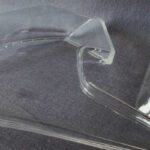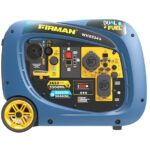When your vehicle requires repairs after a collision, understanding the terminology and regulations surrounding Car Crash Parts is crucial. Navigating the world of auto repair can be complex, especially when it comes to choosing between Original Equipment Manufacturer (OEM) parts and aftermarket alternatives, often referred to as non-OEM parts or car crash parts. This guide clarifies the distinctions and legal requirements, particularly focusing on regulations pertinent to the quality and safety of car crash parts.
OEM vs. Aftermarket Car Crash Parts: What’s the Difference?
OEM parts are manufactured by or for the original manufacturer of your vehicle. They are designed and produced to meet the exact specifications and standards set by the car manufacturer. Aftermarket parts, conversely, are produced by third-party companies and are designed to be compatible replacements for OEM parts. While aftermarket parts can sometimes be more budget-friendly, it’s essential to consider factors beyond just price.
Regulations play a significant role in ensuring the quality and safety of these parts, especially when insurance companies are involved in repair claims. In many regions, including states like California, specific rules are in place to protect consumers and ensure fair repair practices.
California Regulations on Aftermarket Car Crash Parts
California, through its Fair Claims Settlement Practices Regulations, sets forth clear guidelines for insurers when non-OEM replacement crash parts are used in vehicle repairs. These regulations are designed to ensure that safety and quality are not compromised for cost savings. Here are the key requirements insurers must adhere to when specifying the use of aftermarket car crash parts:
Equivalent Quality and Performance
The regulation explicitly states that insurers cannot mandate the use of non-OEM car crash parts unless these parts are “at least equal to the original equipment manufacturer parts in terms of kind, quality, safety, fit, and performance.” This is a critical point, emphasizing that the aftermarket part must match the OEM part in all essential aspects.
Covering Modification Costs
Should any modifications be necessary to ensure the aftermarket part fits correctly, the insurer specifying the non-OEM part is obligated to cover these additional costs. This protects repair shops and vehicle owners from bearing extra expenses due to fitment issues with aftermarket parts.
Warranty of Parts
Insurers directing the use of non-OEM car crash parts must warrant that these parts are of “like kind, quality, safety, fit, and performance” as their OEM counterparts. This warranty provision holds insurers accountable for the quality and suitability of the aftermarket parts they specify.
Permanent Identification of Parts
To ensure accountability and traceability, all car crash parts, both OEM and non-OEM, manufactured after the regulation’s effective date, must have a “permanent, non-removable identification” indicating the manufacturer. This identification must remain accessible even after installation, facilitating inspection and verification.
Disclosure of Non-OEM Parts
California law mandates that the use of non-OEM replacement crash parts must be disclosed to the vehicle owner. This transparency allows consumers to make informed decisions about the parts being used in their vehicle repairs.
Implications for Car Owners and the Auto Repair Industry
These regulations have significant implications. For car owners, they offer assurance that if aftermarket parts are used in their vehicle repairs, these parts must meet stringent standards of quality and safety. For the auto repair industry, these rules provide a framework for fair practices when dealing with insurance claims and part selections. Repair shops are protected from being forced to use substandard parts and can expect insurers to cover necessary modifications.
Ultimately, understanding the regulations surrounding car crash parts empowers both consumers and industry professionals to navigate the repair process with confidence, ensuring vehicle safety and repair quality are prioritized.

